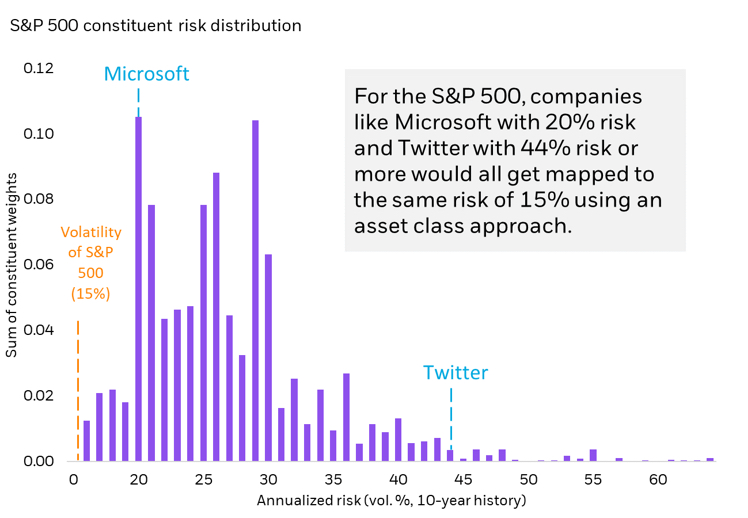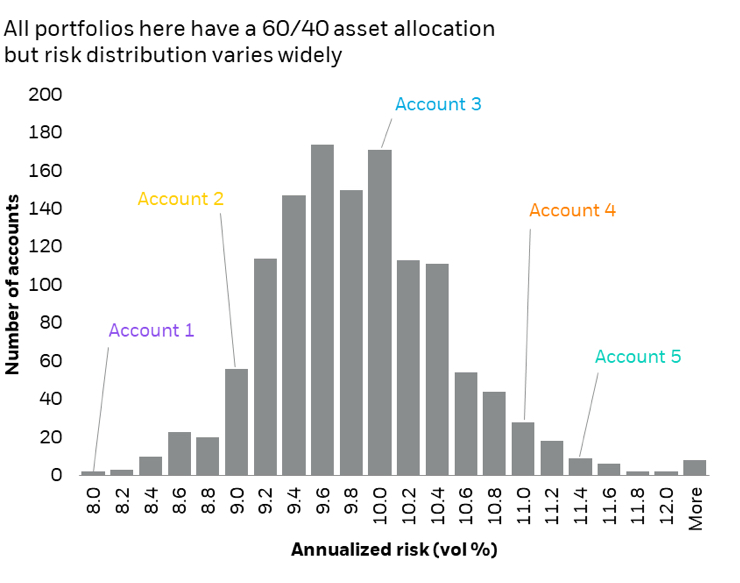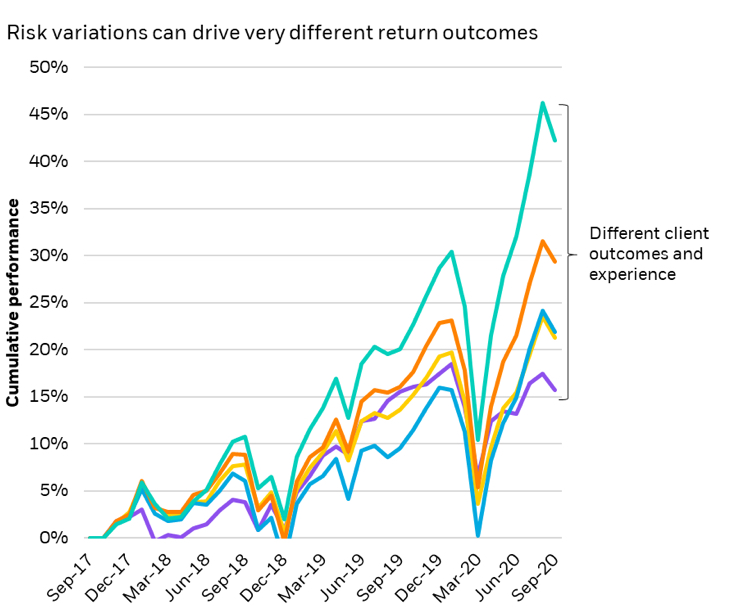Skip to content


Welcome to the Aladdin® site
Please read this page before proceeding, as it explains certain restrictions imposed by law on the distribution of this information and the jurisdictions in which our products and services are authorised to be offered or sold. It is your responsibility to be aware of and to observe all applicable laws and regulations of any relevant jurisdiction.
By entering this site you are agreeing that you have reviewed and agreed to the terms contained herein, including any legal or regulatory restrictions, the Privacy Notice, which explains how we collect, use, and disclose your personal information and how it is protected, and the Cookie Notice, which explains how we use cookies on our sites.
By confirming that you have read this important information, you also:
(i) agree that all access to this website by you will be subject to the disclaimer, risk warnings and other information set out herein; and
(ii) agree that you are the relevant sophistication level and/or type of audience intended for your respective country or jurisdiction identified below.
The information contained on this website (this “Website”) (including without limitation the information, functions and documents posted herein (together, the “Contents”) is made available for informational purposes only.
No Offer
The Contents have been prepared without regard to the investment objectives, financial situation, or means of any person or entity, and the Website is not soliciting any action based upon them.
This material should not be construed as investment advice or a recommendation or an offer or solicitation to buy or sell securities and does not constitute an offer or solicitation in any jurisdiction where or to any persons to whom it would be unauthorized or unlawful to do so.
Access Subject to Local Restrictions
The Website is intended for the following audiences in each respective country or region: In the U.S., institutional investors. In Canada, institutional investors. In the UK, professional clients (as defined by the Financial Conduct Authority or MiFID Rules) and qualified investors only and should not be relied upon by any other persons. In the EEA, professional clients, professional investors, qualified clients and qualified investors. For qualified investors in Switzerland: This information is marketing material. This material shall be exclusively made available to, and directed at, qualified investors as defined in Article 10 (3) of the CISA of 23 June 2006, as amended, at the exclusion of qualified investors with an opting-out pursuant to Art. 5 (1) of the Swiss Federal Act on Financial Services ("FinSA"). For information on art. 8 / 9 Financial Services Act (FinSA) and on your client segmentation under art. 4 FinSA, please see the following website: www.blackrock.com/finsa. In Singapore, for Institutional Investor only as defined in Section 4A of the Securities and Futures Act, Chapter 289 of Singapore. In Hong Kong, for professional Investor only (as defined in the Securities and Futures Ordinance (Cap.571 of the Laws of Hong Kong) and any rules made under that ordinance). In Japan, Professional Investors only (Professional Investor is defined in Financial Instruments and Exchange Act). In Australia, for wholesale clients only as defined in the Australian Corporations Act 2001 (Cth). In Brunei, Indonesia, and Malaysia, Institutional Investors only. In Latin America, institutional investors and financial intermediaries only (not for public distribution). In Mexico, institutional and qualified investors only (not for public distribution). In South Africa, a provider who provides products or services to a client other than financial products or financial services, must disclose to the client the fact that the additional products or services are not regulated under the Act and therefore the client is not afforded the same protections in respect of those additional products or services that may apply in respect of the provision of financial products or services in terms of the Act.
This website and its content are not intended for, or directed to, persons in any countries or jurisdictions that are not enumerated above, or to an audience other than as specified above.
This Website has not been, and will not be submitted to become, approved/verified by, or registered with, any relevant government authorities under the local laws. This Website is not intended for and should not be accessed by persons located or resident in any jurisdiction where (by reason of that person's nationality, domicile, residence or otherwise) the publication or availability of this Website is prohibited or contrary to local law or regulation or would subject any BlackRock entity to any registration or licensing requirements in such jurisdiction.
It is your responsibility to be aware of, to obtain all relevant regulatory approvals, licenses, verifications and/or registrations under, and to observe all applicable laws and regulations of any relevant jurisdiction in connection with your access. If you are unsure about the meaning of any of the information provided, please consult your financial or other professional adviser.
No Warranty
The Contents are published in good faith but no advice, representation or warranty, express or implied, is made by BlackRock or by any person as to its adequacy, accuracy, completeness, reasonableness or that it is fit for your particular purpose, and it should not be relied on as such. The Contents do not purport to be complete and are subject to change. You acknowledge that certain information contained in this Website supplied by third parties may be incorrect or incomplete, and such information is provided on an "AS IS" basis. We reserve the right to change, modify, add, or delete, any content and the terms of use of this Website without notice. Users are advised to periodically review the contents of this Website to be familiar with any modifications. The Website has not made, and expressly disclaims, any representations with respect to any forward-looking statements. By their nature, forward-looking statements are subject to numerous assumptions, risks and uncertainties because they relate to events and depend on circumstances that may or may not occur in the future.
No information on this Website constitutes business, financial, investment, trading, tax, legal, regulatory, accounting or any other advice. If you are unsure about the meaning of any information provided, please consult your financial or other professional adviser.
No Liability
BlackRock shall have no liability for any loss or damage arising in connection with this Website or out of the use, inability to use or reliance on the Contents by any person, including without limitation, any loss of profit or any other damage, direct or consequential, regardless of whether they arise from contractual or tort (including negligence) or whether BlackRock has foreseen such possibility, except where such exclusion or limitation contravenes the applicable law.
You may leave this Website when you access certain links on this Website. BlackRock has not examined any of these websites and does not assume any responsibility for the contents of such websites nor the services, products or items offered through such websites.
Intellectual Property Rights
Copyright, trademark and other forms of proprietary rights protect the Contents of this Website. All Contents are owned or controlled by BlackRock or the party credited as the provider of the Content. Except as expressly provided herein, nothing in this Website should be considered as granting any license or right under any copyright, patent or trademark or other intellectual property rights of BlackRock or any third party.
This Website is for your personal use. As a user, you must not sell, copy, publish, distribute, transfer, modify, display, reproduce, and/or create any derivative works from the information or software on this Website. You must not redeliver any of the pages, text, images, or content of this Website using "framing" or similar technology. Systematic retrieval of content from this Website to create or compile, directly or indirectly, a collection, compilation, database or directory (whether through robots, spiders, automatic devices or manual processes) or creating links to this Website is strictly prohibited. You acknowledge that you have no right to use the content of this Website in any other manner.
Additional Information
Investment involves risks. Past performance is not a guide to future performance. The value of investments and the income from them can fall as well as rise and is not guaranteed. You may not get back the amount originally invested. Changes in the rates of exchange between currencies may cause the value of investments to diminish or increase.
Asset allocation is one of the most important portfolio decisions for investors. However, advisors who rely solely on asset allocation-based analyses may face inherent blind spots that negatively impact their clients. When an advisor can see a more holistic view into the drivers of portfolio return and risk, they can help their clients make more informed decisions.
An asset allocation-based analysis is a common way advisors measure risk in client portfolios. But simplifying risk to the asset class level can create blind spots in decision-making — especially for investors who own individual stocks. In fact, there is often a wide dispersion of risk across different holdings within an asset class that can go unnoticed without reviewing individual security risks.
When only looking at asset allocation, advisors are not able to dissect each holding into its common drivers of performance such as market beta, industry tilts, style factors, interest rates, credit spreads and so on. These risk factors are what really explain the sources of risk in a portfolio. For clients who have concentrated stock positions — often 5%, 10% or more of the total portfolio—highlighting these company-specific risks through a bottoms-up analysis is critically important.
Let’s take Microsoft and Twitter for example. They are both large cap tech companies in the S&P 500. If we performed an analysis using U.S. large cap equities as the asset class — or even technology as a sector — they would be assigned the same level of risk. We know this is not an accurate picture and relying on it could lead to unintended consequences. A bottoms-up analysis of the individual securities provides transparency into the different risks that Microsoft and Twitter actually have.
Same asset class, different risk

Example for illustrative purposes. Source: BlackRock, Aladdin portfolio risk tools. Data as of 9/30/20. See important notes at end for additional information on the S&P 500.
As shown in the chart above, the annualized volatility of the S&P 500 over the past 10 years, which includes Microsoft and Twitter, is 15%. But if you look at the individual securities, you’ll see that Microsoft’s risk is actually 20% and Twitter’s is more than double that at 44%. This means Microsoft and Twitter have the potential to perform very differently within a portfolio – in fact we might expect them to perform differently – yet an asset class analysis alone would tell you they should act the same (15%), effectively ignoring this meaningful difference.
Food for thought
Protein is an important part of our diet. But you don’t ask for “protein” when you want chicken because you could end up with tofu, which changes the entire meal. An asset allocation analysis is like asking for protein— why not just ask for chicken? A bottoms-up analysis offers a more specific and accurate view of risk, which helps prepare the meal clients really want.

Technology makes deeper conversations possible
Wealth management firms and advisors have traditionally used asset allocation because it’s simple, and they haven’t had the means of analyzing risk more deeply at scale across their business. But the technology now exists to make these more meaningful conversations around risk possible. 75% of advisors surveyed by BlackRock say that discussions about risk help clients understand their value, suggesting clients want to talk more about risk.*
The charts below show risk and return dispersion for a group of 60/40 portfolios with a bottoms-up view of risk. Over a 3-year period, this risk variation can drive very different return outcomes, which advisors would not be able to highlight with asset allocation-based analyses alone.
Different risks, different return outcomes


Example for illustrative purposes. Source: BlackRock, Aladdin. Data as of 9/30/20.
Advisors who use sophisticated technology to understand the underlying risks in specific portfolios can provide more transparency around potential outcomes and demonstrate more expertise in client engagements to help build trust and deepen relationships.
Aladdin Wealth is that technology…and more
Expectations for how advisors manage portfolios have evolved. When advisors turn on their workstations, the information they need for a deeper analysis is already there with Aladdin Wealth. They can now better understand the drivers of return and risk in their clients’ investments and do more to inform clients of the potential impacts on their portfolios. The portfolio and risk analysis technology available through Aladdin Wealth can help advisors have fewer blind spots when they serve their clients and supports the continued transformation of your wealth business.
Stay in touch with us
Please try again


